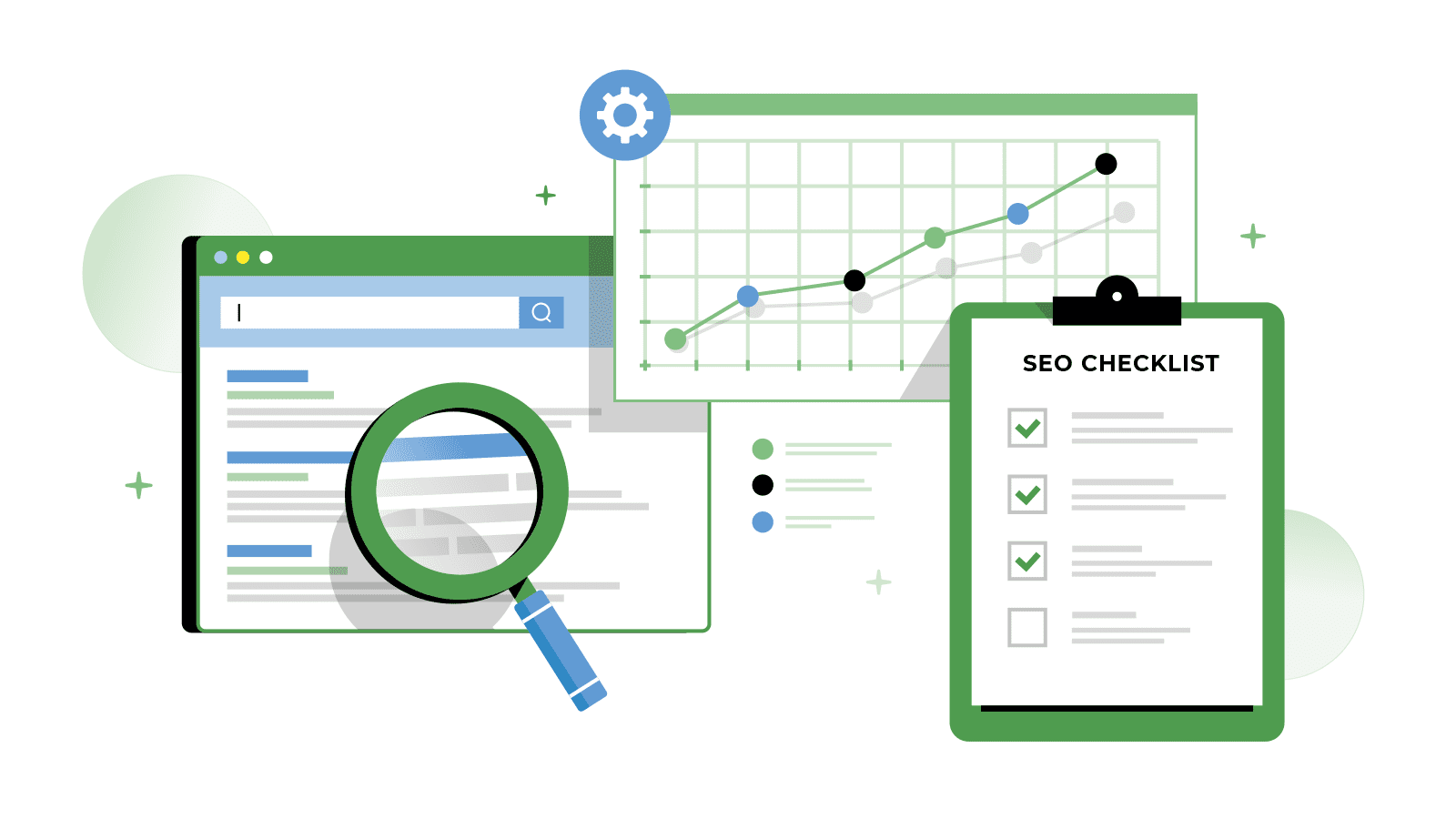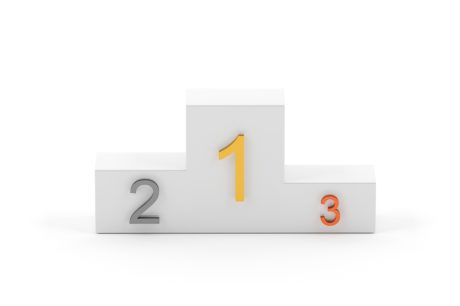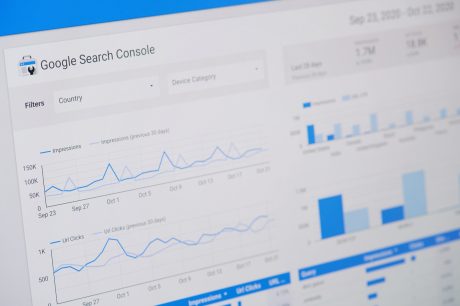The Ultimate SEO Checklist
Below you can find the most complete SEO checklist, tips, and tricks from highly experienced SEO expert from the DiagnoSEO team.

This SEO checklist is based on over 15-years of experience and includes best practices that allow you to be proficient in search engine optimization. Use best practices from this ultimate checklist, make your website SEO friendly, boost search engine rankings, and increase the number of fully satisfied visitors.
Table of Contents
- 2. Content quality checklist
- 3. SEO copywriting checklist
- 4. Website structure checklist
- 5. WordPress / plugins / theme settings checklist
- 6. Server / hosting side checklist
- 7. Analytics checklist
- 8. UI / design checklist
- 9. Off-page SEO (linking) checklist
- 10. Social media checklist
- 11. Domain checklist
- 12. Bonus: Things to avoid
- 13. Bonus: SEO Tools
1. Basic SEO checklist
- 1.1. Add a unique title and meta description for every single page on your website. In WordPress, it is best to use SEO by Yoast and Multi Theme to easily implement them for each page or post.
- 1.2. Each page should have unique titles and meta descriptions.
- 1.3. Avoid having a title too similar to the meta description. It can hurt the ranking.
- 1.4. Don’t use meta keywords – source.
- 1.5. Put your most important keywords at the very beginning of the page title.
- 1.6. Optimize your title and meta description for both keywords and users. Use Keyword placement too.
- 1.7. Slightly Diversify h1 and Title (especially when you use h1 as the main/first headline).
- 1.8. Optimize your meta description in order to get more clicks from the search result page, use buzzwords, etc..
2. Content quality checklist
- 2.1. Add an image for each of your posts. Put your keyword in alt and description/caption under the image.
- 2.2. Check your WordPress website with tools like DiagnoSEO Crawler, ScreamingFrog for Mac, and Xenu for Windows. Correct all errors like 404 errors.
- 2.3. Validate your HTML.
- 2.4. Use schema for article and breadcrumbs. Make sure breadcrumb code is compatible with Google Structured Data Testing Tool.
- 2.5. Upload a great looking logo and favicon for your website.
- 2.6. Link out in your articles to reputable resources related to your content.
- 2.7. Use 301 redirect if you moved the page to another destination.
- 2.8. Don’t put important content inside iframe, frames, flash, image, or JavaScript.
- 2.9. Customize your 404 pages to make them friendly for visitors.
- 2.10. Don’t put too big ads before your important content.
- 2.11. Reduce the bounce rate on your website. You can, for example, speed up your website, add photos, improve website design, and add a related articles section.
- 2.12. Improve Text/HTML ratio by adding more text and choose a theme with clean and semantic HTML code.
- 2.13. Add rel=”nofollow” attribute to not reputable link resources or any commercial links/advertisements.
- 2.14. Add social media profiles on Facebook, Google Plus, Twitter, Pinterest, LinkedIn, and link them with your website. Link to your articles (for example blog posts) from social media accounts.
- 2.15. Make your WordPress website looking astonishing to attract your visitors and make them stay longer on your website.
- 2.16. Extend your pagination links to show more than the default 10 links per page. Better to have fewer pagination links and index more pages from regular pages (home/blog, etc.). You can extend to for example 25-50 posts per page and more depends on your website structure.
- 2.17. Feature/expose your most important, most popular post/pages. For example, create a custom menu with 5-10 most important links and put them in the footer or sidebar widgets under section (Featured/Most popular, etc.).
- 2.18. Add video/multimedia to extend the time spent on your posts.
- 2.19. Build your audience with a newsletter and improve your non-search organic traffic.
- 2.20. Hide duplicated content (for example product descriptions) using JavaScript or write a unique description.
3. SEO copywriting checklist
- 3.1. Divide your text into paragraphs, add additional elements, formatting (like intro, “information box” shortcode, quote. This will make your body copy more attractive to users.
- 3.2. Use bold for a better reading experience, not to highlight the keywords you want to rank for.
- 3.3. Write a longer body copy, at least 300 words. Longer articles tend to rank better, but remember that quality is more important than quantity.
- 3.4. Use h1-h6 tags inside your pages, posts. In most cases for smaller websites, h1-h3 will be enough.
- 3.5. Avoid duplicate pages, make your content truly awesome, and engaging that can’t be found anywhere else. Not only just unique content but content that could not be found somewhere else written in another form.
- 3.6. Link to your pages from the content of your posts (like for example Wikipedia is doing).
- 3.7. Use the table of contents.
- 3.8. Surround your internal link with content (like Wikipedia is doing). Links surrounded by text works better than just a list of links.
- 3.9. Regularly update and extend content for your most important pages. It will be a signal for Google that you take care of those pages and keep them up to date. Of course, it depends on the topic – some topics might not require very frequent updates. In general, once a year it would be good if you review your articles.
- 3.10. Put your targeted keyword in your first 100 words of the article (first paragraph).
- 3.11. Integrate buzz words in your headlines and titles.
- 3.12. Add a description for each of your post images (under the picture).
- 3.13. Use ul li list, em, bold, etc. to make your content easy to read and looking best.
- 3.14. Add description (for minimum 300 words) for each of your categories.
- 3.15. Avoid thin or duplicate content (Panda).
- 3.16. Avoid a too big number of external links.
- 3.17. Add unique photos to your blog posts. Stock images are easily recognized by search engines as duplicates, however, the well-chosen stock images can improve user experience.
- 3.18. Focus on different key-phrase/top on each page. Don’t optimize one page for too many key-phrases.
- 3.19. Update your website regularly. Set to add at least one new article per day to keep your website fresh and growing.
- 3.20. Attract people to leave valuable comments under your post.
4. Website structure checklist
- 4.1. Keep a number of internal links under 100-150 links per page.
- 4.2. Divide your site architecture into thematic categories with subcategories with the targeted keywords.
- 4.3. Take care of link juice. Keep your website architecture well thought. Each page should be accessible with a maximum of 3 clicks. Most important content should be available in 1 click.
- 4.4. Always create clean and semantic code inside your posts, pages. Avoid using plugins, website builders that make complicated structures with a lot of unclear code.
- 4.5. Content First – choose a theme that shows your content with h1/content first and then sidebar and footer content (in the HTML source code).
- 4.6. Keep your main navigation well thought and short at the same time (5-7 links).
5. WordPress / plugins / theme settings checklist
- 5.1. Optimize the speed of your website as much as possible.
- 5.2. Use breadcrumbs (schema ready) and subcategories.
- 5.3. Hide “category” slug from your URLs to categories (only for not indexed websites).
- 5.4. Display related posts. Best if related posts are from the same category as the main post.
- 5.5. Use a unique Categories widget (from Multi Theme).
- 5.6. Use permalinks without a date. Date in URL can harm your ranking – source.
- 5.7. Optimize images. You can use for example https://tinypng.com/
- 5.8. Use the short URL and a short domain name.
- 5.9. Don’t organize your images in many subdirectories.
- 5.10. Use CDN to speed up your site’s performance.
- 5.11. Rename “uncategorized” category.
- 5.12. Use HTML 5 Doctype.
- 5.13. Avoid duplicating author info on each post. Rather put short info with a link to the page with more details about the author.
- 5.14. Keep links to your related posts surrounded by text.
- 5.15. Avoid using too many tags in order to avoid duplicate content penalty (different tags showing the same posts). Use 1-3 different tags per post.
- 5.16. Make sure you don’t block important content via robots.txt.
- 5.17. Generate and submit an XML sitemap to Google Search Console.
- 5.18. Enable an HTML sitemap for your visitors and bots.
- 5.19. Avoid using inline styles (use a child theme or put your styles inside Theme settings).
- 5.20. Use structured data markup.
- 5.21. Use assets of a responsive website, but don’t hide any content in responsive mode. Keep all content accessible regardless of the type of device.
- 5.22. Don’t use author archives if your blog is using one author. This can generate duplicate content issues.
- 5.23. Block spam comments.
- 5.24. Make your content easy to share. Use social sharing buttons, however, be aware that showing a counter with 0 shares/likes can result in negative social proof and harm your shares/likes, etc.
- 5.25. Use the next/previous link or element. Can help both visitors and search engine bots to index your website better.
- 5.26. Don’t use too many widgets in your sidebar. Avoid duplication.
- 5.27. Don’t over-optimize your website. For example, avoid putting targeted keyword as anchor text instead of “Home”. It looks spammy and can harm your website.
6. Server / hosting side checklist
- 6.1. Add an SSL to your website.
- 6.2. Get a unique IP for your website.
- 6.3. Standardize your website URL (with www or non-www).
- 6.4. Speed up your web hosting plan (try VPS if the standard hosting plan is not fast enough).
- 6.5. Put your blog on the main domain or subdirectory. Avoid subdomain if possible.
- 6.7. Server location should be in your country (your website TLD).
- 6.8. Check if your website HTTP response with for example http://web-sniffer.net/. It should be 200. If your domain is not configured right then it can show a different status code. For example, the 302 status code means a temporary redirect, which is very bad for SEO and could affect your rankings a lot.
7. Analytics checklist
- 7.1. Install web analytics. We recommend free GetClicky (easy to track each visitor path), StatCounter (very simple to use), or Google Analytics (with advanced possibilities).
- 7.2. Have a look at the time spent on your website and bounce rate. Work on your content quality, website structure, and layout to reduce bounce rate and extend the time spent on your site.
8. UI / design checklist
- 8.1. Make your website design unique (customize colors, styles of buttons, title, social media, etc.).
- 8.2. Make sure your website looks astonishing.
- 8.3. Make sure your website is easily accessible across different devices without any important content being hidden.
9. Off-page SEO (linking) checklist
- 9.1. Hide your affiliate deep links using deeplink hider shortcode (available only in Multi Theme).
- 9.2. Submit your WordPress website to reputable web directories.
- 9.3. Monitor your backlinks. A high percent of site-wide links or links with direct match keyword phrases can result in getting a penalty. Disavow all spammy links.
- 9.4. Diversify anchor text, use branded words, our domain name.
- 9.5. Create an infographic to get your content to go viral.
- 9.6. Interview famous bloggers from your industry or pay them to write an article on your blog. Let the bloggers share this article on social media and mention it on their blogs then.
- 9.7. If you make content marketing then don’t put just a single link in the sponsored article, but surround it with other links to other similar reputable resources.
- 9.8. Focus on the quality of links. 1 great quality link can give you more boost than 100 lower quality links.
- 9.9. Avoid backlinks from low-quality websites (especially with direct keyword match anchor text). This can result in a penalty (Penguin).
- 9.10. Redirect 404 pages with incoming links to your existing pages.
- 9.11. Diversify internal link anchor text.
- 9.12. Link to your website with diversified anchor text. Avoid site-wide links and anchor text with keywords as this can harm your website.
- 9.13. Investigate and disavow low-quality links.
- 9.14. If you want to rank local then submit your website and address to reputable regional directories related to your website topic.
- 9.15. Find similar blogs to yours and cooperate with them (exchange links, publish a guest post, etc.).
- 9.16. Focus on the quality of your content, because natural and content-driven links work best in long term.
10. Social media checklist
- 10.1. Register a Google Plus account and link it to your website.
- 10.2. Register Facebook Fanpage and link it to your website.
- 10.3. Register a Twitter account and link it to your website.
- 10.4. Register a Pinterest account and link it to your website.
- 10.5. Register a LinkedIn account and link it to your website.
- 10.6. Register other social media profiles for your website. You can use a service like KnowEm.
11. Domain checklist
- 11.1. Use a short domain name, not necessarily with keywords inside.
- 11.2. Remember the brand name is more important than the keyword inside the domain. Keyword in the domain is no longer a strong ranking factor.
- 11.3. Use .com or your country domain. .net, .info, etc. tends to rank a bit worse. Of course, the quality of content is crucial.
- 11.4. You can renew your domain for up to 10 years and show that you are serious about your business.
12. Bonus: Things to avoid
- 12.1. Don’t use any on-site black hat or shady techniques, like cloaking.
- 12.2. Don’t buy any spammy, auto, low quality, auto-generated links.
- 12.3. Stay away from site-wide links. Use only if the domain is very reputable and the link can gain you traffic as well.
- 12.4. Don’t use keyword spamming. Using too many keywords in your content can harm your website.
- 12.5. Don’t link to your website too often with exact match keyword anchor text, especially if the link is placed on low or medium quality websites. Use the brand name, domain name, and natural words like, “here”, “on this page”, etc. Use exact match anchor text on high-quality websites if possible and looks natural.
- 12.6. Don’t use the same h1, title and URL, and internal anchor. Diversify them all.
- 12.7. Don’t use the keyword you want to rank in anchor text for an external link.
13. Bonus: SEO Tools
- 13.1. Register account in Google Search Console.
- 13.2. DiagnoSEO – quick check you’re most important on-page SEO factors.
- 13.3. Use Google Keyword Planner and search by popular domains to find low competitor keyword ideas with decent traffic. An alternative tool can be SEMStorm.
- 13.4. Check your backlink profile with Ahrefs, Majestic, Semrush, or Open Site Explorer.
- 13.5. Check your website speed with GTMetrix, Pingdom, webpagetest.org, and PageSpeed Insights.
- 13.6. Check HTML validation with W3C Validator.
- 13.7. Check how your WordPress website looks on different devices with browserstack.com or responsinator.com
- 13.8. Use structured data testing tool from Google and check structured data on your post/website (for example, breadcrumb).
Did you know…
One of the most important things in SEO Checklist is to check and provide a great user experience. Focus on the quality of your content at first. Then make sure that your website can be crawled and follow all technical details to help search engines index your website smoothly. Great content can really help to generate natural and strong backlinks. Focus on on-page SEO factors more than on off-page factors, because you have got more control over your website. Use different SEO tools and SEO checklists, because each of them can give you slightly different tips and data.



August 1, 2021 at 9:25 am |
It’s a must-read for both novices and seasoned professionals aiming to boost their search engine rankings and enhance user satisfaction. Great job!
October 15, 2023 at 1:47 pm |
The emphasis on both technical and user-friendly aspects sets it apart, making it an essential guide for anyone committed to mastering SEO. Kudos for sharing such a well-rounded resource!